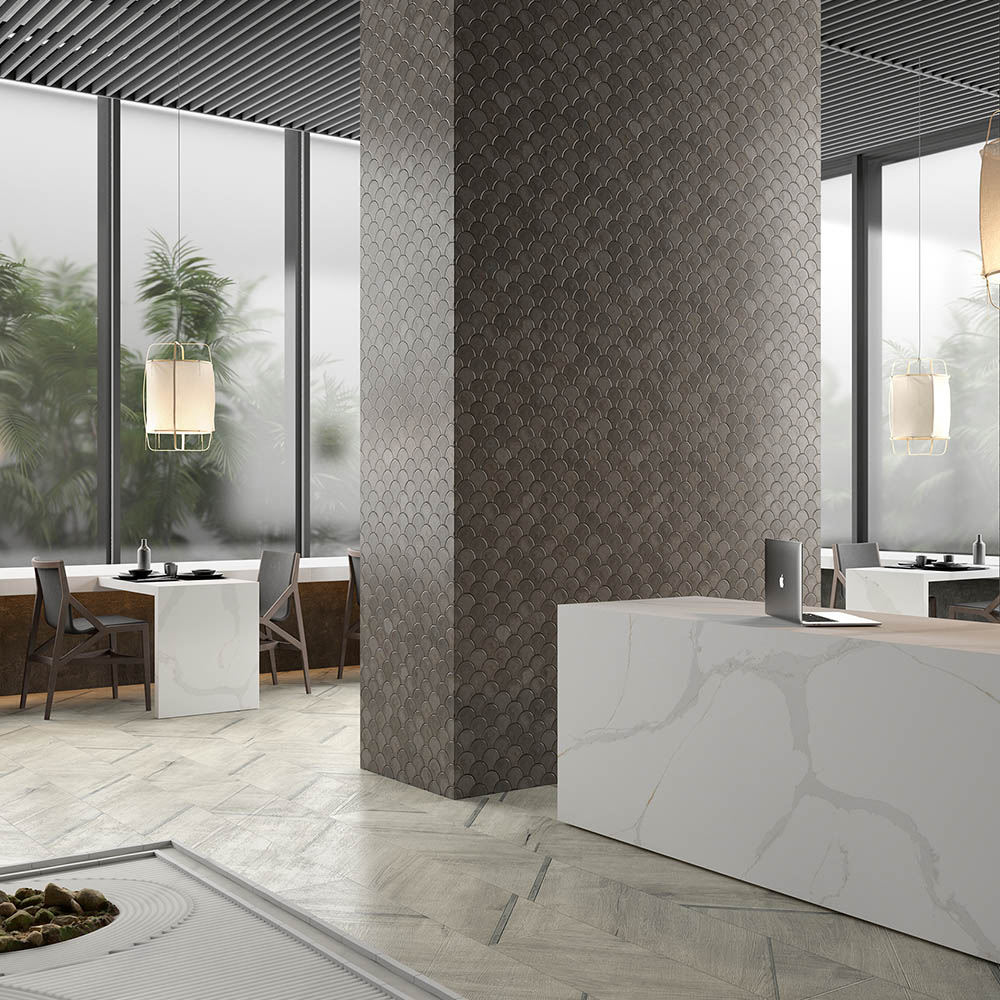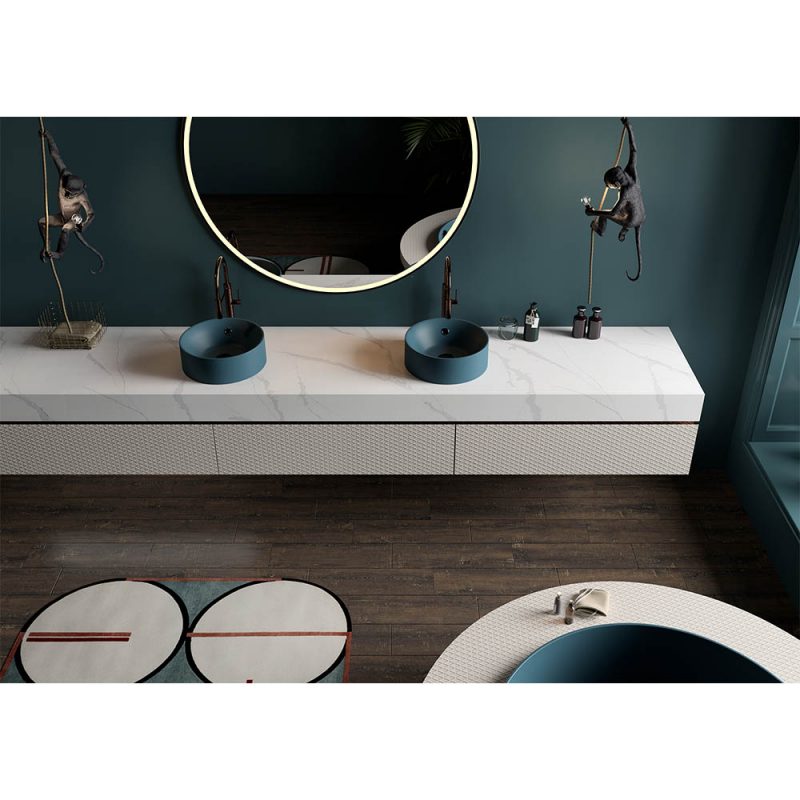Calacatta marble countertops are a stunning addition to any kitchen or bathroom. With their elegant white background and bold veining, they add a touch of luxury and sophistication to the space. However, it’s important to properly seal and protect Calacatta marble to maintain its beauty and ensure its longevity. In this article, we will discuss the steps you need to take to seal and protect Calacatta marble countertops, as well as provide some helpful tips and insights along the way.

This article interest may you. Which kitchen countertop to choose?
Why Seal Calacatta Marble Countertops?
Calacatta marble is a porous natural stone, which means it can absorb liquids and stains if left unsealed. Sealing the surface of your Calacatta marble countertops creates a protective barrier that prevents liquids from seeping into the stone and causing damage. It also helps to enhance the stone’s natural colors and patterns, giving it a more vibrant and polished appearance.
Choosing the Right Sealer for Calacatta Marble
When it comes to sealing Calacatta marble countertops, choosing the right sealer is crucial. There are various types of sealers available, including penetrating sealers and topical sealers.
Penetrating sealers, such as silicone-based sealers, work by absorbing into the pores of the marble and creating a barrier against stains. They are generally considered more effective and long-lasting than topical sealers. On the other hand, topical sealers create a protective layer on the surface of the marble. While they can provide some level of protection, they may need to be reapplied more frequently.
To determine the best sealer for your Calacatta marble countertops, consider factors such as the level of usage, exposure to moisture, and the desired level of maintenance. It’s always a good idea to consult with a professional or the manufacturer’s guidelines to ensure you choose the right sealer for your specific needs.
Preparing Calacatta Marble Countertops for Sealing
Before you start the sealing process, it’s important to properly prepare your Calacatta marble countertops. Follow these steps to ensure the best results:
- Clean the Countertops: Begin by thoroughly cleaning the countertops using a mild, pH-neutral cleaner and a soft cloth or sponge. Avoid abrasive cleaners or scrub brushes, as they can damage the marble surface. Rinse the countertops with clean water and allow them to dry completely.
- Remove Stains (if necessary): If you notice any stubborn stains on your Calacatta marble countertops, it’s important to address them before sealing. There are various stain removal methods you can try, such as using a poultice or a mixture of hydrogen peroxide and ammonia. Always test any cleaning or stain removal products in an inconspicuous area before applying them to the entire surface.
- Check for Damage: Inspect the countertops for any cracks, chips, or other signs of damage. If you discover any issues, it’s recommended to repair them before proceeding with the sealing process. Consult with a professional stone restoration expert for guidance on repairing minor damages or consider replacing severely damaged sections.
Sealing Calacatta Marble Countertops Step-by-Step
Now that you’ve prepared your Calacatta marble countertops, it’s time to seal them. Follow these step-by-step instructions to ensure a successful sealing process:
- Choose a Well-Ventilated Area: Sealing marble countertops can involve the use of chemicals that emit strong odors. Therefore, it’s important to work in a well-ventilated area to minimize exposure. Open windows and doors, or use fans to circulate fresh air during the process.
- Read and Follow Sealer Instructions: Different sealers may have specific instructions and drying times. It’s crucial to carefully read and follow the manufacturer’s instructions provided with the sealer you have chosen. This will ensure that you apply the sealer correctly and achieve the desired results.
- Apply the Sealer: Using a clean, soft cloth or applicator brush, apply the sealer evenly to the surface of the Calacatta marble countertops. Work in small sections, covering the entire area. Avoid leaving excess sealer on the surface, as it can result in a hazy or blotchy appearance.
- Allow Drying Time: After applying the sealer, allow it to dry according to the manufacturer’s instructions. This typically ranges from a few minutes to several hours, depending on the type of sealer used. Avoid touching or using the countertops during the drying process to ensure the sealer sets properly.
- Apply Additional Coats (if necessary): In some cases, multiple coats of sealer may be required to achieve optimal protection. Always refer to the manufacturer’s instructions to determine if additional coats are recommended. Allow each coat to dry thoroughly before applying the next.
- Wipe Off Excess Sealer: After the final coat has dried, use a clean, dry cloth to wipe off any excess sealer from the surface of the countertops. This will help to prevent the sealer from leaving streaks or residues on the marble.
- Cure Time: Sealed marble countertops typically require a curing or drying period before they can be used. The curing time can vary depending on the sealer used, so it’s important to follow the manufacturer’s guidelines. During this time, avoid placing any objects or applying pressure on the countertops.
Maintaining Sealed Calacatta Marble Countertops
Sealing your Calacatta marble countertops is just the first step in maintaining their beauty and longevity. To ensure their continued protection, follow these maintenance tips:
- Clean Regularly: Wipe down the countertops regularly with a soft, damp cloth to remove any spills or debris. Avoid using acidic or abrasive cleaners, as they can dull the marble’s shine and damage the sealer. Instead, opt for pH-neutral cleaners specifically designed for use on marble surfaces.
- Avoid Harsh Chemicals: When cleaning your Calacatta marble countertops, avoid using harsh chemicals or cleaners that contain bleach, ammonia, or vinegar. These substances can damage the sealer and etch the surface of the marble. Stick to gentle, marble-safe cleaning products to preserve the beauty of your countertops.
- Use Cutting Boards and Trivets: To prevent scratches and heat damage, always use cutting boards and trivets when working with knives, hot pans, or other sharp or hot objects on your Calacatta marble countertops. This will help protect the surface from potential damage and maintain its smooth appearance.
- Wipe up Spills Immediately: Calacatta marble is susceptible to staining, so it’s essential to clean up spills promptly. Liquids such as red wine, coffee, or acidic juices can penetrate the sealer and leave behind stains. Use a soft cloth or paper towel to blot the spill and avoid spreading it further.
- Reapply Sealer Periodically: Over time, the sealer on your Calacatta marble countertops may wear off or become less effective. To maintain the protective barrier, it’s recommended to reapply the sealer periodically. The frequency of resealing depends on factors such as usage, exposure to moisture, and the type of sealer used. Check the manufacturer’s guidelines for recommended resealing intervals.
- Avoid Impact and Heavy Pressure: Calacatta marble is a durable stone, but it can still be vulnerable to cracks or chips from heavy impact or pressure. Avoid dropping heavy objects onto the countertops and use caution when moving or placing heavy items on the surface.
FAQs about Sealing and Protecting Calacatta Marble Countertops
Q: How often should I seal my Calacatta marble countertops? A: The frequency of sealing depends on various factors such as usage and exposure to moisture. As a general guideline, it’s recommended to seal Calacatta marble countertops every 6 to 12 months. However, it’s best to refer to the manufacturer’s instructions or consult with a professional for specific recommendations based on your circumstances.
Q: Can I use natural products like lemon or vinegar to clean my Calacatta marble countertops? A: No, it’s not advisable to use natural products like lemon or vinegar to clean Calacatta marble countertops. These substances are acidic and can etch the surface of the marble, causing damage. Stick to pH-neutral cleaners specifically formulated for marble surfaces to ensure their safe and effective cleaning.
Q: How can I remove etch marks from my Calacatta marble countertops? A: Etch marks, which are dull spots or marks caused by acidic substances, can be challenging to remove from marble. One method to try is using a marble polishing powder or paste. Follow the product instructions carefully and gently buff the affected area with a soft cloth or sponge. For severe etch marks or if you’re unsure, it’s best to consult with a professional stone restoration expert.
Q: Can I place hot pans directly on Calacatta marble countertops? A: It’s not recommended to place hot pans or pots directly on Calacatta marble countertops. The extreme heat can damage the sealer and potentially cause thermal shock, leading to cracks or discoloration. Always use trivets or heat-resistant pads to protect the marble surface from heat damage.
Q: Can I use a sealer meant for granite on Calacatta marble countertops? A: While some sealers may be suitable for both granite and marble, it’s important to choose a sealer specifically designed for use on marble surfaces. Granite sealers may not provide the same level of protection or be compatible with the unique properties of Calacatta marble. Always read the product labels and choose a sealer that is recommended for use on marble.
Q: Can I DIY the sealing process, or should I hire a professional? A: Sealing Calacatta marble countertops can be a DIY project, but it requires attention to detail and following the proper steps. If you’re unsure or want to ensure the best results, it’s recommended to hire a professional stone care specialist. They have the expertise and experience to properly seal and protect your countertops, ensuring their longevity and beauty.
Conclusion
Sealing and protecting Calacatta marble countertops is essential to maintain their beauty and protect them from stains and damage. By choosing the right sealer, properly preparing the countertops, and following the sealing process, you can ensure that your Calacatta marble countertops remain a stunning focal point in your home for years to come. Remember to regularly clean and maintain the sealed countertops to preserve their natural elegance. If you have any specific concerns or questions, it’s always best to consult with a professional stone care expert for personalized guidance.

